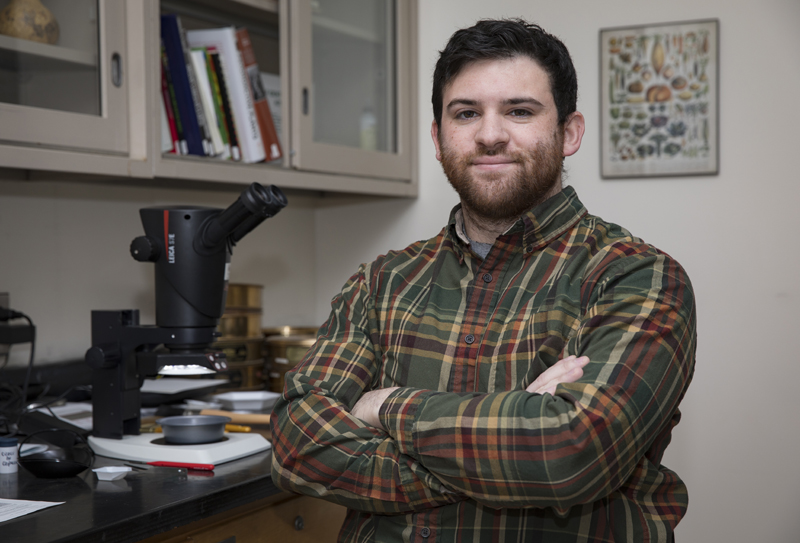Public archaeology spotlight: Scott Ferrara
Master's student enjoys program's challenging projects, collaborative research

Binghamton University’s public archaeology program is making history accessible to everyone.
“It’s geared more toward the community and protecting cultural resources than a broad anthropological approach,” said Scott Ferrara, a first-year master’s student in the public archaeology program. “We’re asking questions that people really haven’t asked or considered before.”
Ferrara, who got his undergraduate degree in archaeology from Hofstra University, is currently in his first semester of the 20-month masters of arts/public archaeology (MAPA) program.
“It’s a fairly new program,” Ferrara said. “The Anthropology Department here is bigger than anywhere else I’ve seen and the professors we have here are some of the greatest too — in the field, not just on campus. That’s pretty cool and definitely what got me here.”
Focusing on paleoethnobotany — the study of people and plants through archeological records — Ferrara is hoping to shed some light on the history surrounding his hometown of Massapequa, N.Y.
“Especially in Long Island, buried sites are very threatened because we have a lot of development and there’s not a lot of knowledge in the general public of these resources and why they’re important,” Ferrara said. “I want to work with museums and private culture resource management firms and the way I want to do that is through studying plants. This is a fairly new field, so through studying and getting the practice and experience I’m getting here, I offer a different approach.”
Choosing from a diverse array of classes, Ferrara has been able to hone in on his niche.
“I think my favorite class so far is my paleoethnobotany class — it’s taught by my advisor BrieAnna Langlie, and she’s also my favorite professor,” Ferrara said. “She’s enthusiastic and she starts a lot of projects that get the whole Anthropology Department involved. It’s inspiring.”
In each of his classes Ferrara has picked up important skills that will further his career.
“My other two classes are great because in one I get to work on projects specifically for my region of focus,” Ferrara said. “And the other is about archaeological theory and I learn things that blow my mind. It makes me think about different aspects of the practice of my field in ways that I haven’t considered before.”
Because the MAPA program builds upon information from many different fields, Ferrara has gained exposure to various research methods and philosophies.
“It’s definitely interdisciplinary. We share a building with the Geological Sciences Department and we have a lot of collaborations with geophysics and mapping and spatial analysis, so we’re pretty involved with them,” Ferrara said. “We also like to partner with the chemistry labs because, as students, we can use a lot of their resources. They have this thing called the ADL lab and it’s really useful for trying to analyze data.”
The Analytical and Diagnostic Laboratory (ADL) is one of Binghamton University’s interdisciplinary facilities that is equipped with state-of-the-art research instruments. Utilizing the research equipment, the public archaeology program encourages students to further their studies outside of the classroom.
“Another reason why I’m really grateful to have Dr. Langlie as an advisor is that since I got here she’s been pushing me to apply for grants and get funding and to start thinking about a thesis project,” Ferrara said. “It’s helpful to have that in the program because it gets you thinking about this early.”
The faculty support has been especially helpful for Ferrara, allowing him to take on challenging projects.
“It’s like a big family in the Anthropology Department and it’s really easy to work with any faculty member,” Ferrara said. “The big focus here is on collaboration with outside organizations, museums and historical societies. It’s all about getting yourself out there so you have a good network when you start working.”
Between the people and the facilities, Ferrara believes that the MAPA program is preparing him to take on any professional endeavor that he may encounter.
“The resources we have here are incredible. We have a lot of resources for equipment and faculty members who are knowledgeable, and that’s a huge strength,” Ferrara said. “If it wasn’t the way it is now I don’t think it would attract as many students. The resources bring students here.”

